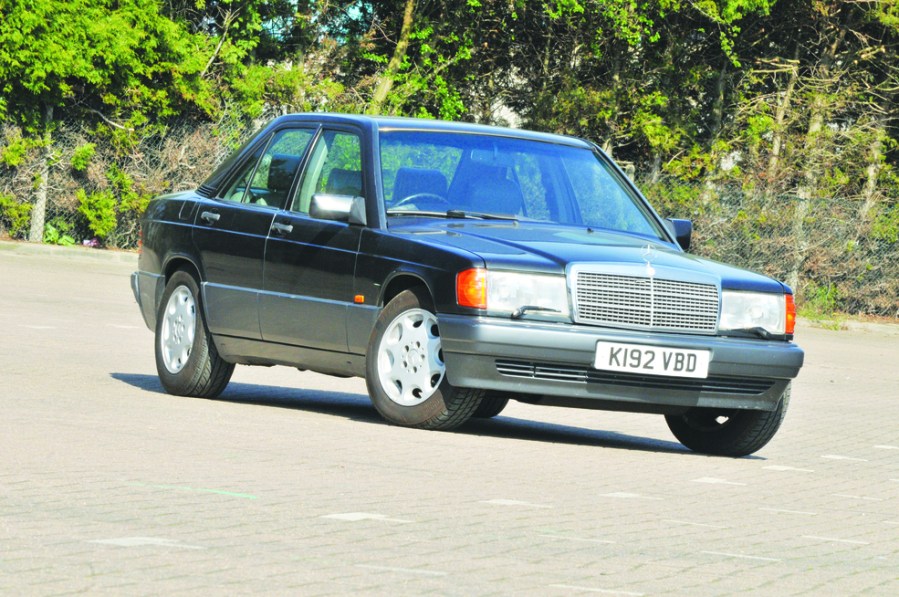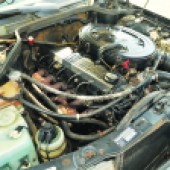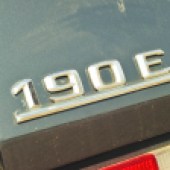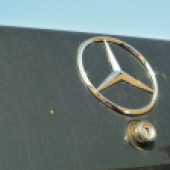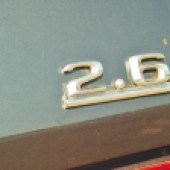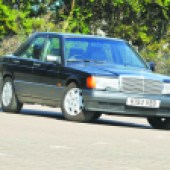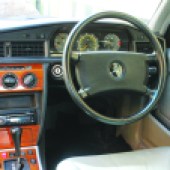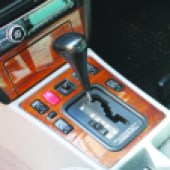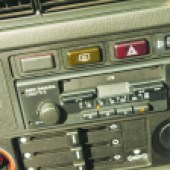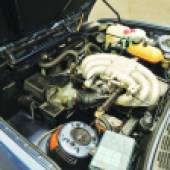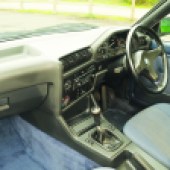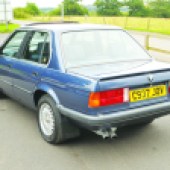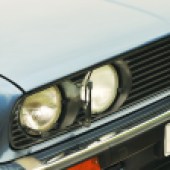When BMW unveiled the second generation of its successful 3-Series, Merc felt it was time it was allowed to join the party. Does the six-pot Mercedes 190E still stack up against the yuppies’ favourite, the 325i?
If any car defines the Yuppie era of the 1980s, then it’s BMW’s second-generation 3-Series, the so-called E30 model which quickly established itself as the next rung on the corporate ladder above the hot hatchback, especially in brisk 325i form.
Like many great cars, the recipe which created the E30 didn’t employ any single groundbreaking idea, but merely distilled the best features of current thinking: a compact, neatly styled body, German build quality, traditional rear-wheel drive and a gutsy six-cylinder engine proved perfect for the market.
BMW as a company was already pretty hot at the brand management game and so the trickle-down effect of a halo model was used well: at the top of the tree was the bodykitted 325i Sport, all boot spoiler and cross-spoke BBS alloys, but for those those further down the ladder the blue-and-white propeller badge was still attainable in steel-wheeled 318i form. Making the car available as a two-door, four-door, convertible and then later one of the first ‘lifestyle’ estates was a masterstroke which cemented a place in the market which BMW still enjoys today with the current 3-Series and its bewildering number of derivatives.
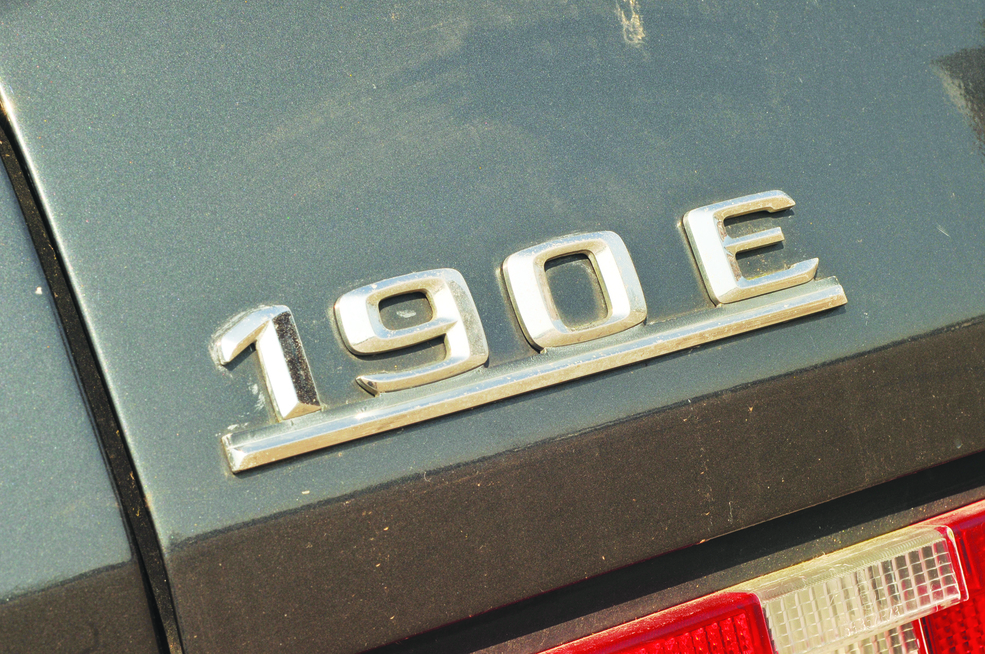
This was an era when Mercedes-Benz was used to being top dog, with even BMW’s 7-Series failing to match the majesty of the mighty Mercedes S-Class, so to see its Bavarian neighbour cleaning up in the small saloon market with the first-generation BMW E21 3-Series must have rankled rather. The solution of course was for Mercedes to expand its range downwards, a decision which was no doubt made with one eye on the corporate average fuel economy regulations in the US market.
The result was the Mercedes 190E, as much a downsized E-Class as the 3-Series was a shrunken 5-Series but Mercedes was clearly hesitant in a market it was unfamiliar with: the 190E was destined to be available in any style you liked as long as it was a four-door saloon. Convertible, two-door and estate would all come with later generations once the 190E had become the Mercedes C-Class.
As you might expect, the smallest Mercedes and BMW were remarkably similar when they were both offered as new cars, but in many ways they’re also surprisingly far apart. We try to pick a winner as a modern(ish) classic favourite today.
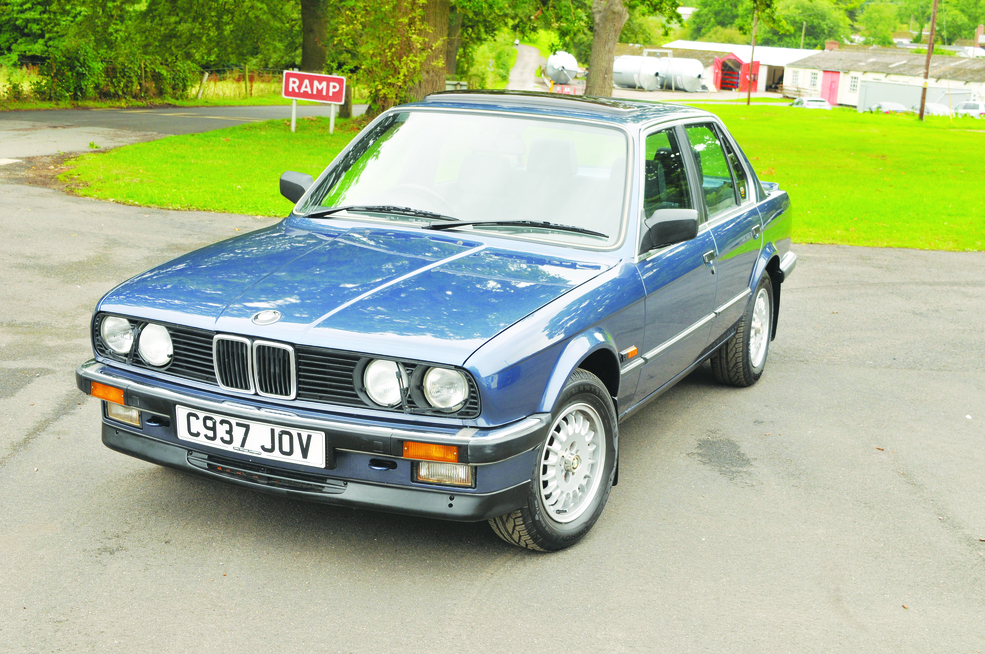
BMW 325i
The BMW 3-Series as a concept can trace its roots right back to the ‘Neue Klasse’ cars of the early 1960s, which are generally credited with rescuing BMW from a fate worse than bankruptcy: being swallowed by Mercedes-Benz.
Believe it or not, this came remarkably close to happening in 1959 when the finances of the Bayerische Motoren Werke were so rocky thanks to a lopsided range consisting of bubble cars at one end and expensive luxury saloons at the other that a merger was proposed with Daimler-Benz. Until, that is, industrialist Herbert Quandt, thanks to family wealth from the Varta battery concern, injected fresh capital which enabled development of a new model.
This was to appear in 1962 as the BMW 1500, later marketed as the BMW 1800 and BMW 2000 which was a thoroughly modern design providing just what the market wanted. In a recipe which now sounds familiar, it had lively new overhead camshaft engines, high quality construction and a neat but unassuming body style with independent suspension and made the contemporary Mercedes look dated.
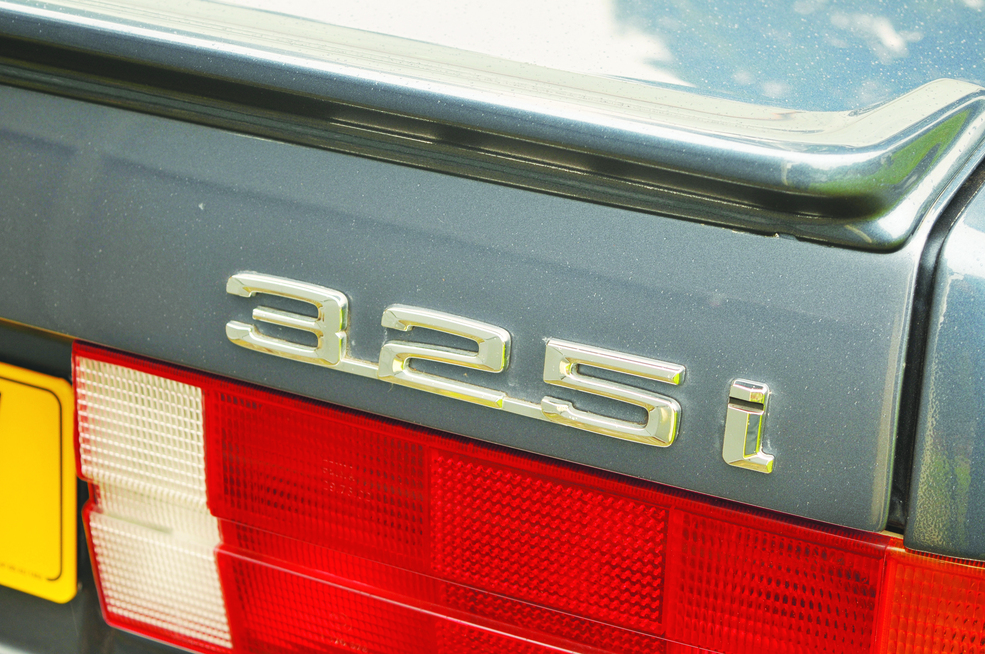
Known colloquially as the ‘Neue Klasse’ (New Class) cars, such was the success of the new model that a two-door was a logical extension to the range and duly appeared in 1966 as the BMW 1600-2 (‘2’ for two doors), the name later changed to simply 1602.
Before long the US market demanded a faster version of the car and the 2-litre engine was added to the 1602 bodyshell to create the fabled BMW 2002.
By the mid 1970s, the ’02 range had transformed BMW’s finances to the point where it could fund an all-new successor and the result was the first 3-Series which appeared in 1975. When the six-cylinder engine from the bigger BMWs was added in 1978 to create the 323i, it had a car which was unique in the market and a legend was born.
That first-generation car was extensively facelifted in 1982 into the E30 generation and in typical BMW tradition it was very much a tidying up and modernising of a design which had very few faults. The range-topping E30 was initially the 323i, sharing the same engine as its predecessor, but in 1985 the model was transformed with the addition of the new 2.5-litre version of the M20 ‘small six’ which was good for 171bhp.

By this time, BMW as a brand had gained traction in the UK and ‘The Ultimate Driving Machine’ became a favourite among affluent younger buyers.
In time, the performance of the 325i would be eclipsed by the BMW E30 M3 with its race-bred four-cylinder engine, but this would remain very much a specialist niche model available in left-hand drive only, meaning it was the 325i which was the popular choice.
Successfully employing a technique which BMW is still using today, what was essentially the same car could be had in remarkably different flavours. Top of the tree was a 325i Sport with its factory bodykit, 15-inch cross-spoke BBS alloys and leather trim, but the E30 325i could also be had in regular SE spec with cloth seats and plain wheels in which form it looked little different from a humble four-cylinder 318i with optional alloys.
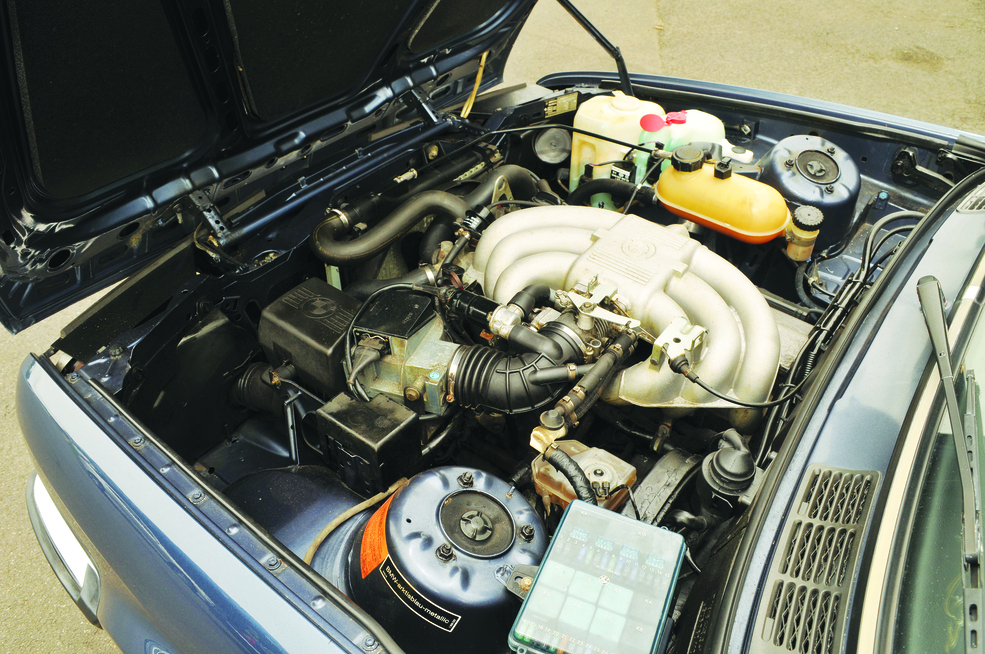
It’s such an example we have here, the four-door bodyshell, sober blue paint and ‘bottle top’ wheels giving it a subtle appeal which appealed to just as many buyers as the shouty Sport.
As a previous owner of a 325i Touring, I’ve covered many thousands of miles in the E30 3-Series and most of its successors but the first surprise is how small the car feels after a modern 3-Series. It was this which made the E30 so popular though and in truth it doesn’t feel cramped once you’re in there, thanks to the slender doors which lack the big control modules and side impact airbags of the newer cars.
Bosch’s electronic L-Jetronic injection means the M20 always fires at the first turn if it’s in good health and blipping the throttle is a reminder of how responsive the small six is.
Despite its sporty market positioning, the manual shift in BMWs of this era isn’t the short-shifting affair you find in a newer 3-Series, but back in the day it was perfectly acceptable. These cars tend to suffer with a vague, sloppy shift action as the bushes in the lever and shift linkage wear, but being a low-mileage example this is one of the best I’ve tried and the shift action feels nice and tight despite the longish throw.

The 325i is less torquey but happier to spin up than the larger six-pot BMW units found in the 5 and 7-Series and it’s this which gives the 325i its lively character. In manual form, it’s a pretty brisk car even by modern standards and offers an engagement which is lacking in the more sophisticated BMW E36 and E46 generations. The 325i was criticised by contemporary road testers for its relatively low-geared steering, but in reality it’s perfectly acceptable and at speed on the motorway does make for more relaxing progress.
It’s perhaps the slightly tail-happy nature of the car – especially in the wet – which made those ’80s road testers wish for a quicker rack. The semi-trailing arm nature of the rear suspension gives the E30 traditional rear-drive handling and in the dry, a sure-footed and predictable nature… but on iffy tyres on a greasy surface it can catch out the unaware driver. Much like the Mazda MX-5 though, it’s safe and predictable within sensible limits and if it does break loose then the chances are you’re already aware you’re pushing your luck.
As a modern classic though, the 325i acquits itself really very well, having more than enough pace to keep up with traffic and parts support which is excellent. How does it compare to Mercedes’ first attempt at cracking a market which until then BMW had kept to itself?
Check out our top seven facts on the BMW E30 3-Series.
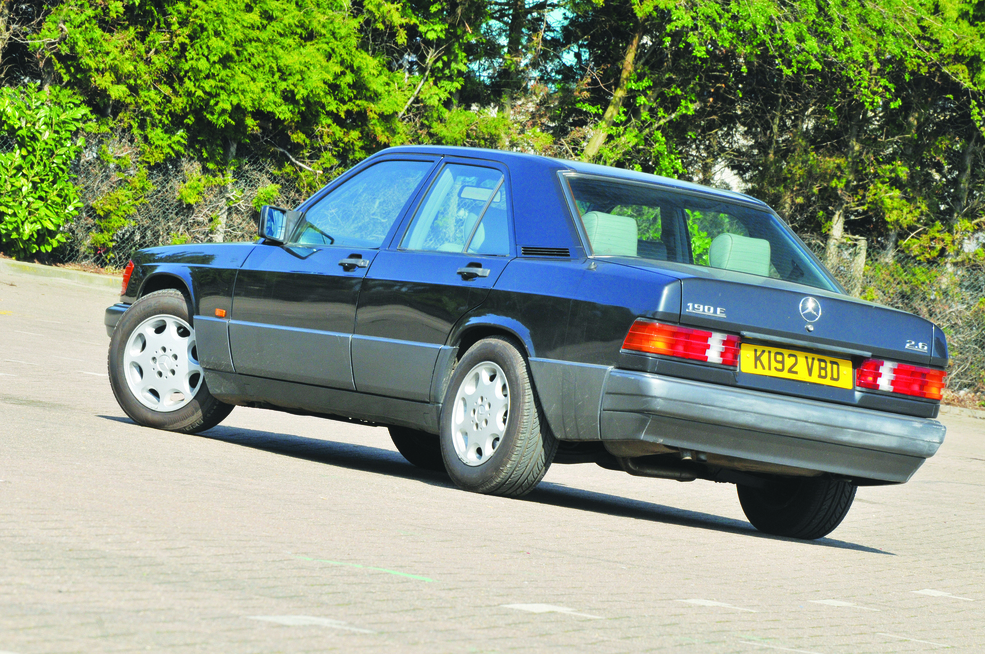
Mercedes 190E 2.6
By the late 1970s, Mercedes was no doubt well aware that a range consisting of two big saloons, a coupe, one roadster and a utilitarian off-roader was a pretty narrow offering. Expanding downwards was a logical move, but the project was developed around a central brief that none of the traditional Mercedes values should be compromised in the drive to create a smaller, more efficient car.
Chief among these was the legendary strength and crash safety of the firm’s cars and some advanced engineering was used including the use of high-strength steel in crucial areas to achieve passive safety equivalent to the much larger S-Class. Impressively, this was achieved while keeping overall weight down to just 1180kg in the basic model which despite the car’s visual bulk is on a par with the BMW.
Speaking of which, Bruno Sacco’s style was a neat piece of work a world away from the dated appearance of the firm’s other cars of the time like the W123. Its neat proportions, slab sides and chiselled nose gave it a distinctively Mercedes family appearance with greater road presence than the 3-Series.

Rather curiously given the success BMW had already enjoyed with its six-cylinder 3-Series, the 190 was launched as the 90 bhp carburetted 190 and the 122 bhp Bosch-injected 190, both using the 1997cc M102 four-cylinder engine. It wasn’t until 1986 that a six-cylinder powerplant was added as the Mercedes 190E 2.6. Rated at 166bhp and 168lbf.ft torque, the single-cam Bosch-injected six was – unsurprisingly – close to the BMW in make-up and power output. Like the BMW, an ultimate performance range-topper was provided by a tuned four-cylinder, in this case the Cosworth-developed 2.3-16 and later 2.5-16.
Where the Mercedes did score over the BMW was its more sophisticated chassis, the 190E featuring a multi-link rear suspension providing five locating links for each rear wheel, the details of which were even patented by Mercedes.
Despite this, on first acquaintance the Mercedes feels more sober and grown-up than the BMW. It feels larger, for a start and the woodgrained dashboard gives it the ambience of the larger Mercedes saloons which is altogether less sporting than the BMW.
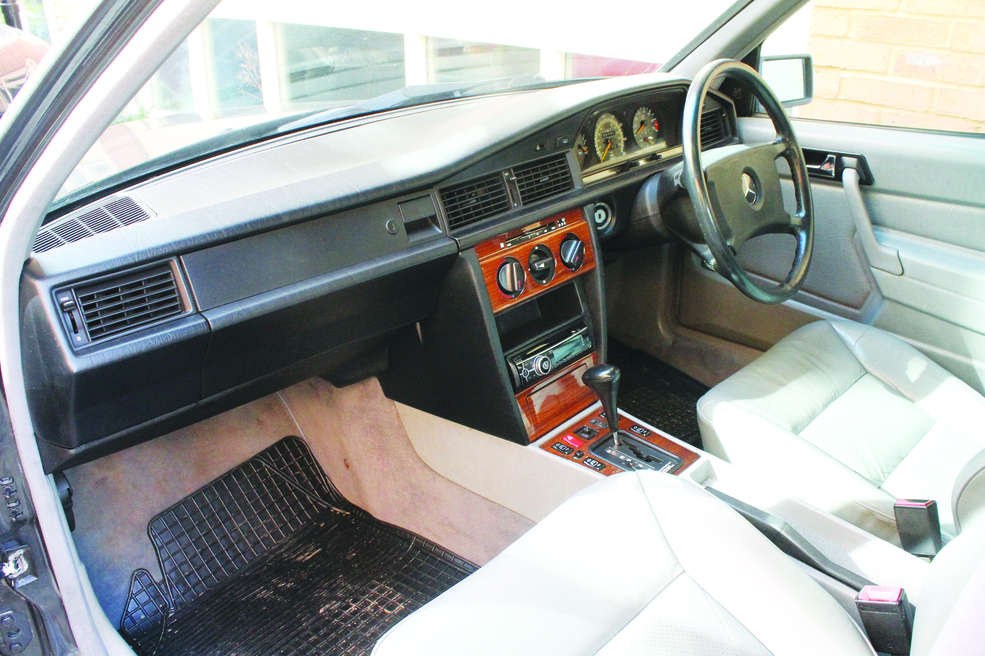
Firing up the 190E, drivers unfamiliar with ’80s Mercedes will be confused by the ignition key slot being to the left of the steering wheel but like the BMW, modern injection sees it fire evenly, hot or cold and it’s a smooth unit known to be robust.
It’s an illustration of the different market positioning of the pair that the six-pot Mercedes was more often ordered with the automatic gearbox in the UK. In fact it’s the transmission which is where the Mercedes falls down against the BMW, with the manual transmission being a notchy and slightly cumbersome affair while the automatic is smooth and refined but massively blunts the car’s performance potential.
One particularly odd feature of the unit is that it was designed to set off in second gear from a standstill, which makes the car seem particularly sluggish. Under a heavy throttle it will change down to first soon after pulling away but the result is pretty jerky progress which doesn’t really do the car justice.

When rolling this isn’t an issue and at speed the 190E is composed where the 325i feels slightly breathless, but it does take time to get used to the long throttle pedal travel. Typical of Mercedes models of the era, this can make the car feel less lively than it is, although the trade-off is that it is very easy to drive smoothly in heavy traffic.
Regardless of whether your 190E is a two or three-pedal version, its composure on a twisty road is impressive for a rear-drive car with its roots in the late ’70s. Like the BMW it benefits from quality tyres but is less twitchy in the wet and generally easier to drive hard, helped by the standard fitment for the UK market of the ‘ASC’ electronic locking differential.
Away from the driving experience though, one thing stands out above all with the 190E: like its bigger brothers, it feels brick-outhouse tough, from the way the doors swing closed to the way the 190,000-mile example in our photos doesn’t squeak or rattle over even the worst roads. Good though the BMW is, you won’t drive an E30 this solid.
Verdict
This is a tricky one for fans of anything ’80s but ultimately is decided by the Mercedes being available only as a saloon. I’d be tempted to go for the 325i convertible or the handy Touring but if we’re comparing like with like then despite being a previous 325i owner, my vote goes to the Mercedes 190E. It’s slightly more spacious than the BMW, a touch more refined and ultimately just so very solid. In that respect, the original brief not to compromise those traditional Mercedes values does seem to have been carried through to production.

